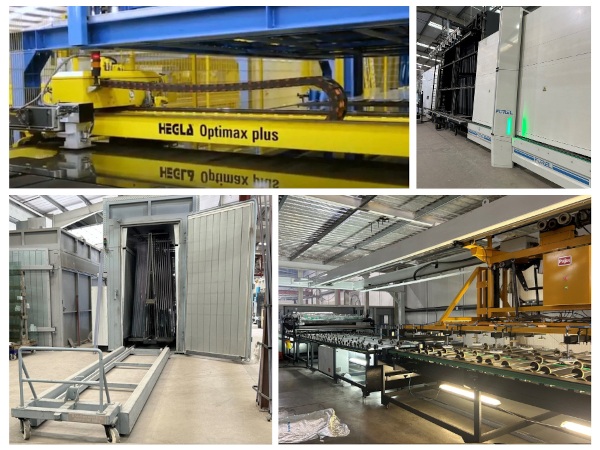Date: 17 July 2008
Already in the run-up to the major sports event, the city has caught the attention of the world because of numerous record-breaking construction projects. World-renowned architects have given Beijing a new look in many places – and the multi-purpose material glass in its finest form, which was processed on machines from Bystronic glass group has been greatly used everywhere. .jpg)
The two L-shaped towers extend obliquely almost 240 meters into the sky. Sky-high, they are then joined by a 70-meter high connecting element. Also at second glance, the new landmark of Beijing appears to be somehow twisted within itself– more like an optical illusion than a real building. Therefore, many inhabitants of Beijing already regard the CCTV Tower as a wonder of architecture. .jpg)
The CCTV Tower – Is A Static Masterpiece
The German-Dutch architect duo Ole Scheeren and Rem Kohlhaas designed the new headquarters of Chinese state television. Incorporating an area of 475,000 square meters, the CCTV is the second largest building in the world with only the Pentagon being larger in area. Currently, construction on the giant building is still in progress, however, once completed the Tower will offer space for 250 TV stations having more than ten thousand employees.
.jpg)
"Our contribution is in the façade", Gu Xin, Vice president at Tianjin CSG, one of the largest Chinese glass processing firms, explains. Tianjin CSG's main business is primarily the production of high-quality insulating glass, as has also been installed here in the CCTV Tower. Gu Xin: "In the case of the CCTV Tower, double laminated insulating glass panes were used. The manufacture of these panes is very difficult and only possible with a lot of experience and in excellent production plants."
To be able to produce products of this quality, Tianjin CSG has relied on the machine technology of Bystronic glass for many years. Gu Xing lists several reasons for this decision: "After having bought products mainly from Bystronic glass, the quality of the machines convinced us very quickly. Now, we can produce precisely the quality products that our customers require. For this reason, we will use the technology from Bystronic glass in future as well."
The World's Largest Terminal Building
However, the CCTV Tower is not the only building in Beijing that has reached international fame. Airport Terminal 3, which was completed in March, is also second to none worldwide. With an overall length of 3.25 km and an area of 170 soccer fields, the gigantic steel-glass structure is unrivalled and can claim the title "The World's Largest Terminal Building". Despite the dimensions, Terminal 3 is impressive with its filigree architecture and its colours. The deep-red columns and the matte golden roof resemble the imperial palaces and temples in Beijing. .jpg)
Glass processor Wuhuatianbao is responsible for this successful combination of the ancient and the modern. 80 percent of the company's product range consists of Low-E glass. The company has delivered numerous glass elements for the new Terminal 3, as Yang Honh Bing, President at Wuhuatianbao, explains. "The Olympic Games are a very important flagship project for our country. Therefore, we are naturally very proud to have participated in this project." Wuhuatianbao also relies on the technology from Bystronic glass for the production of quality glass. Yang Honh Bing explains: "The production lines from Bystronic glass deliver stable and excellent quality products that will last for the long term. This reliability is extremely important in our business." The success proves Mr. Yang right: Apart from Terminal 3, glass panes from Wuhuatianbao were also high in demand for the execution of other Olympic projects and can, for instance, be found in the new swimming arena or the Olympic Village.
Room for 91,000 spectators
Another architectural highlight in Beijing has been nicknamed "The Nest" by the Chinese. They refer to the new Beijing National Stadium, which can accommodate 91,000 spectators.
In fact, the building with its numerous struts looks like an over-dimensioned bird's nest. The idea for this unusual construction stemmed from Swiss architects Herzog & DeMeuro, who already proved their love for the extraordinary with the construction of the Allianz Arena in Munich. Another customer of Bystronic glass was also involved in this project: Xinfuxin. Chen Quan Fu, chairman at Xinfuxin, explains: "The glass that we delivered for the Beijing National Stadium was mainly processed on machines from Bystronic glass. We are very satisfied with these production lines as they satisfy our demand to be able to deliver the best insulating glass products. Additionally, I appreciate the almost friendship-like interaction when we negotiate on new machines." .jpg)
Even when the Olympic Games are over, buildings like the CCTV Tower, Terminal 3 or the Beijing National Stadium are certain to catch many peoples eyes being impressive as they demonstrate the almost unlimited architectural possibilities when using glass material today.







Add new comment